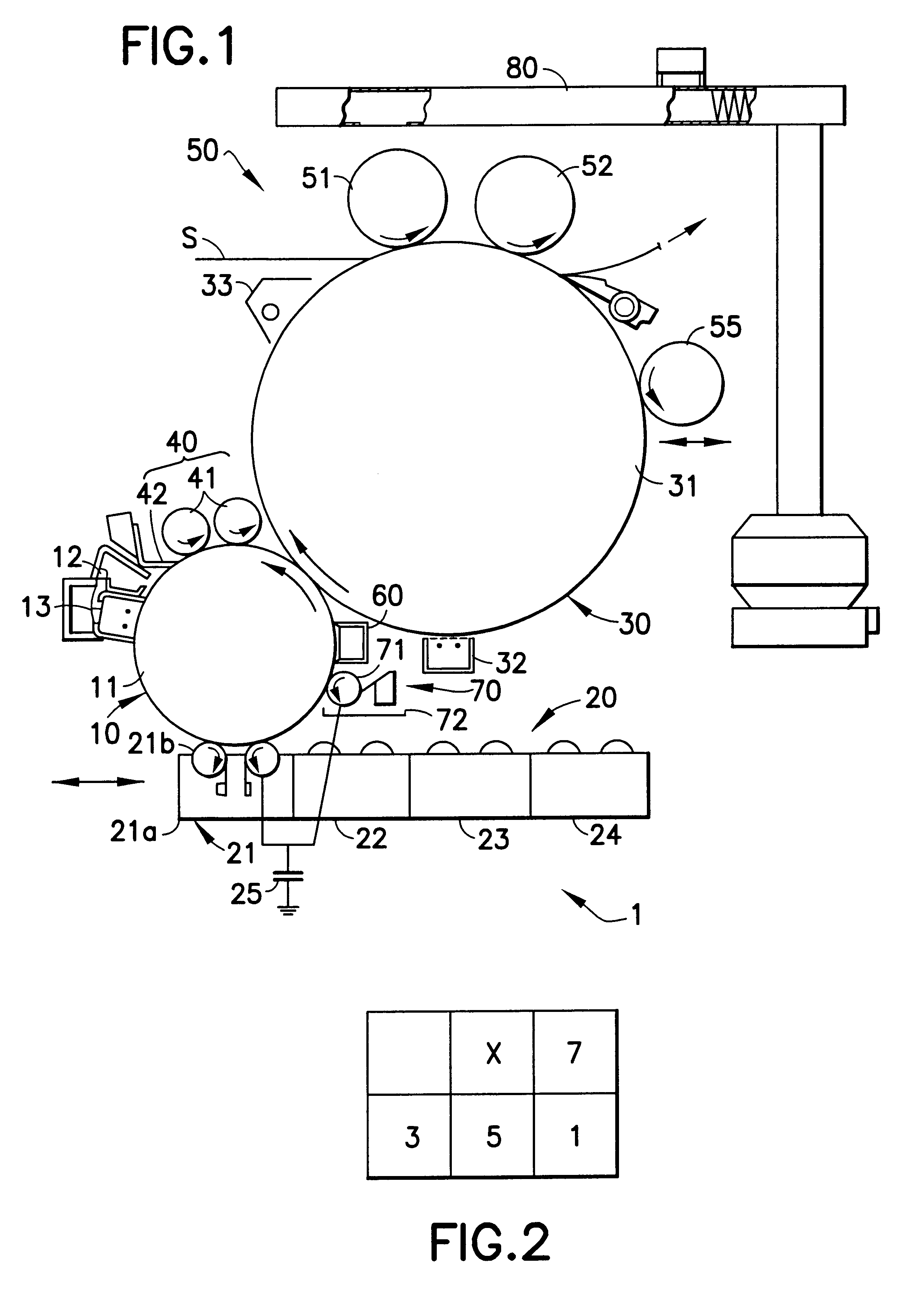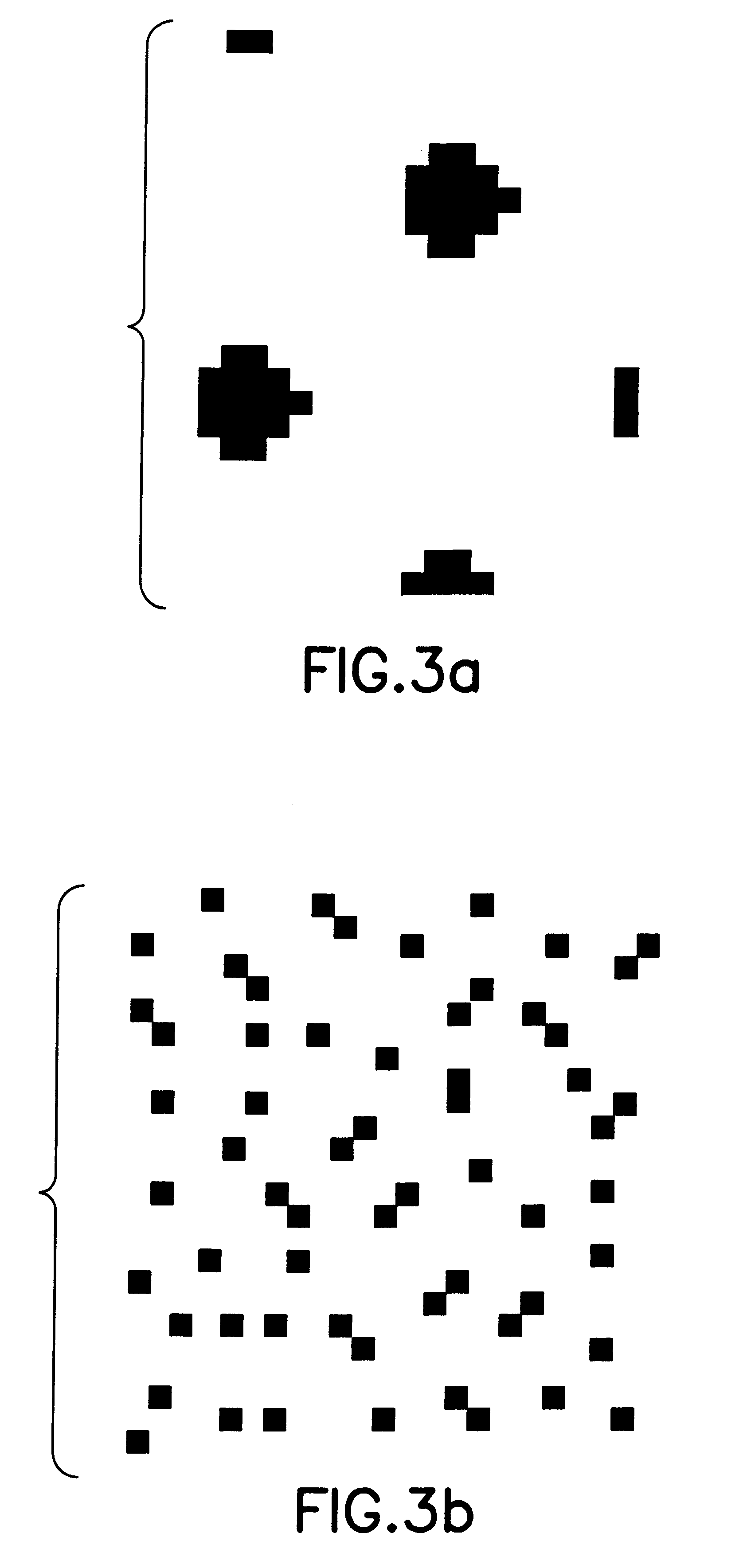Electrophotographic device, electrophotography, and process for preparing sheet bearing toner images
a technology which is applied in the field of electrophotography and electrophotography for preparing sheet bearing toner images, can solve the problems of serious disadvantages such as "moire" and inability to enhance detail reproducibility, and avoid rough graininess and graininess of amplitude modulation screening methods
- Summary
- Abstract
- Description
- Claims
- Application Information
AI Technical Summary
Problems solved by technology
Method used
Image
Examples
example 1
The above electrophotographic printer 1 was used to print a continuous tone image onto image receiving sheets. Four kinds of liquid developers containing any of toners of 0.5 .mu.m, 1 .mu.m, 2 .mu.m and 3 .mu.m in average particle size and 0.05 to 10 .mu.m in particle size distribution range (measured by centrifugal precipitation using SA-CP3 produced by Shimadzu) were used for development respectively. The image receiving sheets used were paper, plastic film, and said raw printing plate for direct imaging. As the image binarization means, the method using the Bayer dither matrix and the error diffusion technique shown in FIG. 2 were used. The minimum dot pitch was controlled by the image binarization process to prepare data of 1 / 15 mm, 1 / 23 mm and 1 / 30 mm for printing.
In every case, the printed images were free from the subject moire and the color moire and could realize very smooth gray scale reproduction, being less affected by the dot gain. The thickness of the toner layer after...
example 2
In Example 1, when the minimum dot pitch was smaller, the formed toner image was more affected by the dot gain. On the other hand, when the minimum dot pitch was 1 / 15 mm, some graininess was observed. Accordingly, in the regions high in image area rate, binarization was effected using an error diffusion technique with the minimum dot pitch as 1 / 15 mm, and in the regions where the dot pitches exceed 0.1 mm according to this method, a minimum dot pitch of 1 / 30 mm was adopted for binarization. This made the graininess less conspicuous, and the dot gain was decreased compared with a case where a minimum dot pitch of 1 / 30 mm was adopted irrespective of the image area rate.
PUM
 Login to View More
Login to View More Abstract
Description
Claims
Application Information
 Login to View More
Login to View More - R&D
- Intellectual Property
- Life Sciences
- Materials
- Tech Scout
- Unparalleled Data Quality
- Higher Quality Content
- 60% Fewer Hallucinations
Browse by: Latest US Patents, China's latest patents, Technical Efficacy Thesaurus, Application Domain, Technology Topic, Popular Technical Reports.
© 2025 PatSnap. All rights reserved.Legal|Privacy policy|Modern Slavery Act Transparency Statement|Sitemap|About US| Contact US: help@patsnap.com



